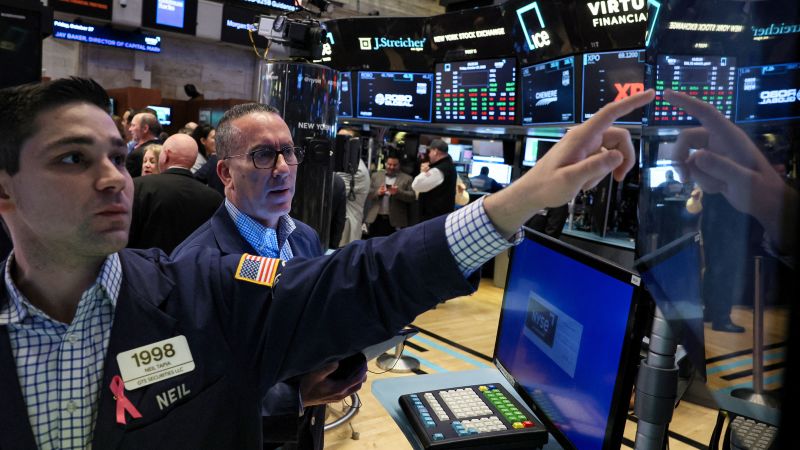The benchmark S&P 500 index closed in correction territory on Friday, ending a week made volatile by weaker-than-expected earnings reports and strong economic data.
The S&P 500 fell 0.5%, marking a more than 10% drop from its most recent July peak. The Dow tumbled 367 points, or 1.1%, after sliding by more than 400 points at the trading session’s lows. The Nasdaq Composite added 0.4%.
Amazon shares rose 6.8% on Friday after the e-commerce giant reported a beat on top-and bottom-lines for its most recent quarter. That comes after tech stocks sank earlier this week on mixed earnings reports from Alphabet and Meta Platforms, leading the Nasdaq Composite on Wednesday to log its worst day since February.
Still, earnings misses elsewhere helped accelerate this week’s market selloff.
Chevron shares lost 6.7% after the company reported a wide miss on third-quarter earnings. ExxonMobil shares declined 1.9% after posting third-quarter earnings that slumped 54% from the prior year.
Ford Motors shares shed 12.2% after reporting third-quarter earnings that fell short of Wall Street’s expectations and withdrew its full-year guidance due to uncertainty stemming from the United Auto Workers’ strike. The union struck a deal with the automaker earlier this week.
JPMorgan Chase shares fell 3.6% after a filing revealed that CEO Jamie Dimon and his family plan to sell $141 million worth of stock starting next year.
For the week, the Dow fell 2.1%. The S&P 500 slipped 2.5% and the Nasdaq Composite lost 2.6%.
Key data this week has shown that the US economy continues to remain strong despite interest rates at their highest level in 22 years, concerning investors already fearful that the central bank will keep rates higher for longer.
Gross domestic product, a measure of all goods and services produced in the US economy, rose at an annualized 4.9% rate during the third quarter, the Commerce Department reported Thursday. That measure, adjusted for inflation and seasonal swings, came in well above the second quarter’s 2.1% pace and economists’ expectations of a 4.3% rate.
Investors also digested the latest Personal Consumer Expenditures Price index, the Federal Reserve’s preferred inflation gauge. Excluding gas and food prices, the core PCE index rose 3.7% for the 12 months ended in September, its smallest year-over-year increase since May 2021. The index rose 0.3% on a monthly basis from the 0.1% rate seen in August.
Traders see a near 100% chance that the Fed will hold interest rates steady after its monetary policy meeting next week, according to the CME FedWatch Tool.
The University of Michigan’s latest consumer survey also revealed on Friday that sentiment fell 6% this month, as Americans grew increasingly concerned about the economic outlook.
As stocks settle after the trading day, levels might change slightly.
Read the full article here







